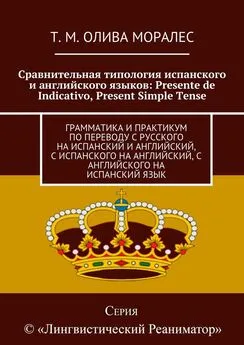Станислав Коростелев - Английский язык для юристов. Предпринимательское право
- Название:Английский язык для юристов. Предпринимательское право
- Автор:
- Жанр:
- Издательство:046ebc0b-b024-102a-94d5-07de47c81719
- Год:2006
- Город:СПб
- ISBN:5-469-01382-0
- Рейтинг:
- Избранное:Добавить в избранное
-
Отзывы:
-
Ваша оценка:
Станислав Коростелев - Английский язык для юристов. Предпринимательское право краткое содержание
Настоящее учебное пособие предназначено для овладения лексикой в области предпринимательского и коммерческого права студентами лингвистических вузов и студентами гражданско-правовой специализации юридических вузов.
Книга призвана дать преподавателям и студентам специальный языковой и профессиональный материал, ориентированный на повышение качества профессиональной подготовки в области правовой лингвистики и международного бизнеса.
Английский язык для юристов. Предпринимательское право - читать онлайн бесплатно ознакомительный отрывок
Интервал:
Закладка:
The general partner can accumulate additional capital without admitting another general partner who would be entitled to management rights. Thus, the general partner maintains control while strengthening the firm's treasury. Limited partnership means limited liability, which in its turn means that the limited partner's nonpartnership property cannot be used to satisfy any debts owed by the partnership. Thus, limited partners receive a return on their investment while risking only that original investment.
Exercise 1. Comprehension questions:
1. Explain the term partnership.
2. Identify the essential elements of a partnership.
3. How are the profits and losses shared between the parties?
4. Explain why unlimited liability is perhaps the most unattractive feature f a partnership.
5. What may protect the partners against loss of non-partnership property?
6. How can be partnership formed?
7. What are the requirements for partnership agreements?
8. Explain the term capital contribution.
9. What are the ways of partnership's dissolution?
Exercise 2. Find in the text English equivalents to the following:
Ежегодная выплата; цессионарий; переуступать; доверенное лицо; стоимость «фирмы»; компаньон-вкладчик, компаньон с ограниченной ответственностью; товарищество на вере; бессрочное товарищество; активное сальдо; овладение.
Exercise 3. Consult recommended dictionaries and give words or phrases to the following definitions:
Полное товарищество; товарищество на вере; учредительный договор; преобразование хозяйственных товариществ; складочный капитал; ответственность участников; внесение вкладов; ведение дел товарищества; изменение состава участников; передача доли участника.
Exercise 4. Be ready to talk on one of the following topics:
Describe the evidence used by the courts to determine whether a partnership exists.
1. Distinguish between property belonging to the partnership and property belonging to the individual partners.
2. Outline the various rights, duties, and liabilities of partners.
3. Determine the ranking of partnership liabilities in settling accounts after the dissolution of a partnership.
4. Compare the advantages of a limited partner in a limited partnership to those of a general partner.
Exercise 5. Make up your own dialog on the case: A partnership, Hartigan and Dwyer, operates a department store in Troy, New York, while a partnership, Hartigan, Dwyer, and O'Brien, operates a department store in Albany, New York. An insurance company issued a policy in the name of «Hartigan and Dwyer, department store merchant, Troy, New York» insuring against liabilities arising from the operation of a delivery truck. The truck, while being used for deliveries from Albany store operated by Hartigan, Dwyer, and O'Brien, strikes and kills a child. If Hartigan and Dwyer are called upon individually to pay a tort judgment, are they protected by the policy?
Unit 18
Corporation
Акционерное общество
Акционерным обществом (глава 4 ГК РФ) признается общество, уставный капитал которого разделен на определенное число акций; участники акционерного общества (акционеры) не отвечают по его обязательствам и несут риск убытков, связанных с деятельностью общества, в пределах стоимости принадлежащих им акций. Отличительными чертами акционерного общества (далее – АО) являются: 1) деление уставного капитала на доли (вклады) участников (акционеров) равного размера; 2) доли участия в уставном капитале воплощаются в специальные ценные бумаги – акции, из номинальной стоимости которых составляется этот капитал; 3) ограниченность для акционеров риска убытков, связанных с деятельностью АО, стоимостью принадлежащих им акций.
– articles of incorporation – договор об учреждении корпорации
– bylaws – правила внутреннего распорядка (принимаемые правлением фирмы)
– cash dividend – дивиденд, выплаченный наличными
– certificate of authority – документ, удостоверяющий какое-либо право
– certificate of incorporation – разрешение (государственного органа) на создание корпорации
– close corporation – закрытая акционерная корпорация (с ограниченным числом участников, не имеющих права продавать свои акции без согласия других акционеров)
– common stock – обычные (обыкновенные) акции
– сorporation by estoppel – корпорация, существование которой подтверждено судом на основании неопровержимых фактов
– dividends – дивиденды
– incorporators – учредители
– novation – новация; перевод долга; цессия прав по обязательству
– preferred stock – привилегированные акции
– private corporation – частно-правовая корпорация
– quasi-public corporations – квазигосударственная корпорация (действует как частное предприятие, но имеет от государства привилегии)
– statutory agent – представитель в силу закона
– stock certificate – сертификат о праве собственности на акции
– stock dividend – дивиденд в форме акций
A corporation is a legal entity (or a legal person) created by a federal statute authorizing individuals to operate an enterprise. The corporation offers a convenient and efficient way to finance a large-scale business operation by dividing its ownership into many units; these units can be sold easily to a large number of investors. The corporate form also offers limited liability to those who share its ownership. In this way, the personal assets of the corporation's owners cannot be taken if the corporation defaults on its obligations or commits a tort or a crime. Unlike the legal status of the partnership, the legal status of the corporation is not affected by the death, incapacity, or bankruptcy of an officer or shareholder.
A private corporation is a corporation formed by private persons to accomplish a task best undertaken by an entity that can raise large amounts of capital quickly or that can grant the protection of limited liability. If the corporation is organized for profit-making purposes, those profits may be distributed to the shareholders in the form of dividends. Dividends are the net profits, or surplus, set aside for the shareholders. Shareholders (or stockholders) are the persons who own units of interest (shares of stock) in a corporation.
The term public corporation is properly used to describe a corporation created by a government for governmental purposes. The term includes incorporated cities, sanitation districts, school districts, transit districts, and so on.
Corporations that are privately organized for profit but also provide a service upon which the public is dependent are generally referred to as quasi-public corporations. In most instances, they are public utilities, which provide the public with such essentials as water, gas, and electricity.
A business corporation may be designated as a close corporation when the outstanding shares of stock and managerial control are closely held by fewer than 50 shareholders.
The people who want to begin a new corporation or who want to incorporate an existing business are called promoters. These people do the actual day-to-day work involved in the incorporation process. Promoters occupy a fiduciary relationship with the nonexistent corporation and its future shareholders, which means that the promoter must act in the best interests of the new corporation and its shareholders. Incorporators are the people who prepare, actually sign the articles of incorporation, and submit them to the appropriate government office.
The articles of incorporation are the written application to the government body for permission to incorporate. The articles, together with the status of incorporation, represent the legal boundaries within which a corporation must conduct its business.
The articles of incorporation must include the corporation name; the duration of the corporation; the purpose(s) of the corporation; the number and classes of shares; the shareholders' rights in relation to shares, classes of shares, and special shares; the shareholders' right to buy new shares; the addresses of its original registered (statutory) office and its original registered (statutory) agent; the number of directors plus the names and addresses of the initial directors; and each incorporator's name and address.
Once satisfied that all legal formalities have been met, the appropriate government officer will issue the corporation's charter, or certificate of incorporation. The charter, or certificate of incorporation, is the corporation's official authorization to do business in the state. After the charter is issued, the corporation then becomes a fully and legally incorporated entity. The work of the promoters and incorporators ends, unless they become directors or officers of the corporation.
The first order of business upon incorporation is the holding of an organizational meeting. The meeting must be run by the initial directors designated in the articles, or by the incorporators. The first order of business at an incorporator-run meeting is to elect the directors.
In addition to the appointment of the first directors, the adoption of bylaws, or regulations, also occurs at the organizational meeting. Bylaws, or regulations, are the rules that guide the corporation's day-to-day internal affairs. Bylaw provisions usually stipulate the time and place of shareholders' and directors' meetings, quorum requirements, qualifications and duties of directors and officers, and procedures for filling board vacancies.
For various liability reasons, the courts may be called upon to decide whether a business entity is a de jure corporation, a de facto corporation, or a corporation by estoppel.
Читать дальшеИнтервал:
Закладка:










